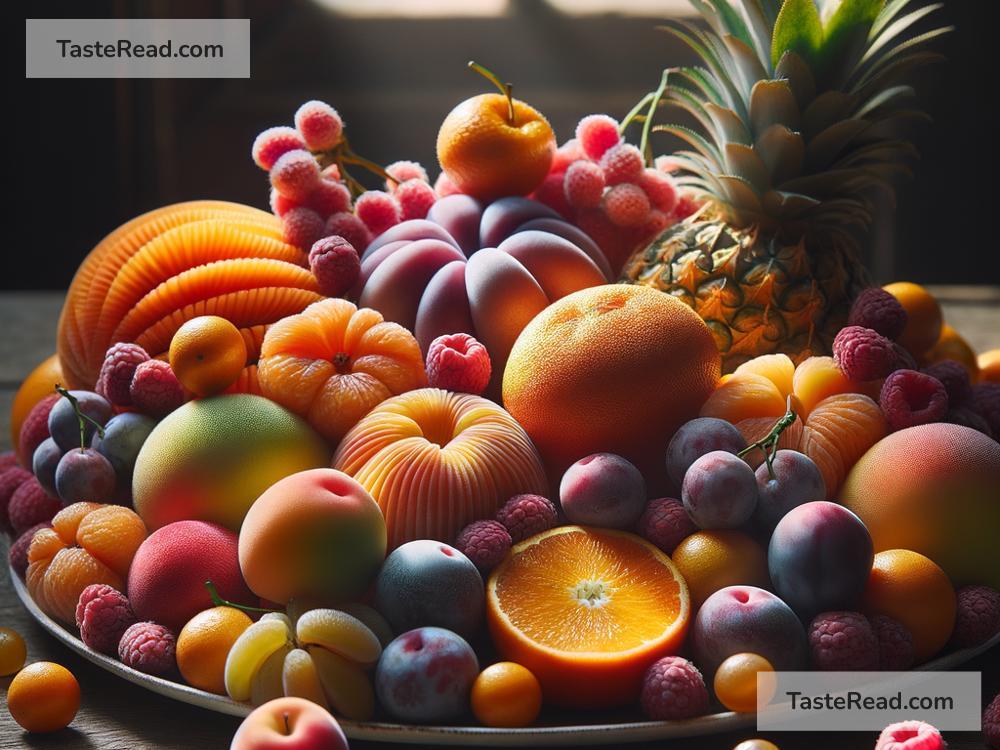The Impact of Hybridization on the Taste of Fruits
Fruits are one of nature’s sweetest gifts to humankind. Their vibrant colors, juicy textures, and delightful flavors make them irresistible. Over time, humans have worked hard to improve fruits—making them juicier, sweeter, and more appealing. One way this has been achieved is through hybridization. But what exactly is hybridization, and how does it affect the taste of our favorite fruits? Let’s break it down in simple terms.
What Is Hybridization?
Hybridization is the process of crossing two different types of plants to create a new one. It’s like matching two fruits with desirable qualities—such as sweetness from one and bright colors from the other—to make a “super fruit.” This isn’t magic; it’s science! By carefully choosing parent plants, farmers and scientists can create hybrids that look and taste better than the original fruits.
For example, the beloved tangy-sweet tangelo is a hybrid between a tangerine and a pomelo. Similarly, the juicy Honeycrisp apple is a hybrid created to combine crisp texture with a balance of sweetness and tartness.
Why Do People Hybridize Fruits?
People hybridize fruits for several reasons:
1. Better taste: Making fruits sweeter or richer in flavor can appeal more to our taste buds.
2. Larger size: Bigger fruits are easier to sell and consume.
3. Enhanced durability: Some hybrids resist bruising or rotting during transport.
4. Appearance: Bright colors and appealing shapes make fruits more attractive to buyers.
Taste is a key motivator. After all, who doesn’t love biting into a perfectly sweet strawberry or enjoying a mango bursting with tropical flavor?
How Hybridization Impacts Taste
When fruits are hybridized, their taste can be affected in exciting ways. Let’s explore some of the changes that hybridization brings to fruit flavors.
1. Sweeter Fruits
One of the biggest impacts of hybridization is the increased sweetness. Many hybrids are designed to contain more sugar, making them taste better. For example, the cotton candy grape is a grape hybrid that tastes surprisingly similar to cotton candy. By carefully crossing grape varieties, scientists created a fruit with extraordinarily high sugar levels while maintaining that classic grape juiciness.
2. Balanced Flavors
Sometimes, hybridization creates fruits with a perfect balance of sweetness and tartness. Take the Honeycrisp apple, for instance. It combines the sharp tanginess of one apple type with the sugary sweetness of another to create a well-rounded flavor. This balance makes hybrids enjoyable for a broader range of people.
3. Unique Flavors
Hybridization can also lead to fruits with flavors that are completely new. Did you know that the pluot, a combination of plum and apricot, has a flavor profile that’s distinct from either of its parent fruits? The mixing of DNA from two fruits can often result in hybrids that surprise us with flavors we’ve never tasted before.
4. Less Intense Flavors
Sometimes, hybridization reduces the intensity of a fruit’s taste. While the goal is usually to make fruits sweeter, the natural tang or bitterness of a fruit may be toned down in the process. This can lead to a milder, less complex flavor. For example, some people argue that modern watermelon hybrids are more watery and less intense in flavor compared to older, heirloom varieties.
Are Hybridized Fruits Always Better?
While hybridization has brought us many delicious fruits, it’s not always perfect. Some people find that the taste of hybrid fruits lacks depth or “character.” In the push to create fruits that are sweeter and larger, other qualities—like the natural aroma or unique flavor nuances—might be lost.
Take the tomato, for instance. Many store-bought tomatoes today are hybrids bred for size and durability. But some folks believe these tomatoes lack the rich, earthy flavor of older, non-hybrid varieties. This is why heirloom tomatoes, which retain their original flavors, are so highly sought after by food enthusiasts.
The Role of Consumer Preferences
Taste is subjective—what tastes amazing to one person may seem too sweet to another. Hybridization reflects consumer preferences, so fruits are often bred to suit what people want. Over the years, there has been a growing demand for sweeter, juicier fruits. As a result, many hybrids lean towards higher sugar content and smoother textures. However, there’s also a market for fruits with more traditional tastes, which is where heirloom varieties still play an important role.
What Does the Future Hold?
Hybridization is constantly evolving with new technologies in farming and genetics. Scientists are now exploring the possibility of improving taste while also boosting nutritional content. For example, hybrids could be created to not only taste better but also contain more vitamins or antioxidants.
Additionally, there’s a growing interest in sustainable farming practices. Hybridization might help create fruits that require less water, withstand pests, and grow well without chemical pesticides—while still tasting amazing.
Conclusion
Hybridization has a significant impact on the taste of fruits, making them sweeter, juicier, and more diverse in flavor. From tangelos to pluots, hybrids have brought us incredible taste experiences that weren’t possible before. However, not everyone agrees that hybrids are always better, and traditional varieties still have their charm.
As farming technology improves, the future of hybridized fruits looks bright—and delicious! Whether you prefer modern hybrids or old-fashioned heirlooms, one thing is certain: fruits will always be a delightful treat no matter how they are grown. So, enjoy your next bite of fruit and appreciate the science and creativity that went into making it taste just right!


